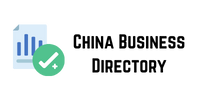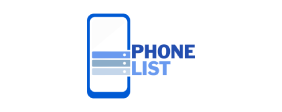Descriptive statistics is one of the main branches of statistics and one of the most important approaches to its application.
This approach is essential when representing data graphically through tables and figures, and this technique is essential when it comes to quantifying data and making it understandable .
If you’re looking to improve your programming and data analysis skills or become a data science specialist, this article is for you. We’ll tell you what this discipline is all about and how to put it into practice.
What is descriptive statistics?
Descriptive statistics is a vital analytical approach in mathematics and research. It involves analyzing collected data and then describing, summarizing, and presenting its behavior— or, in other words, translating the data and making it understandable.
In addition to describing the data, it overseas data also seeks to identify patterns and trends within that information to detect anomalies or unusual data.
It should be noted that this approach only studies the data collected in the research, without making inferences or hypotheses.
Where are descriptive statistics used?
There are many applications for descriptive statistics today. Let’s look at some examples:
1. Market research
This type of statistics allows companies to analyze large amounts of data about customers, such as their consumption habits, preferences, and new market trends .
This is done through advanced charts and metrics that provide indicators that help you make much more accurate decisions.
2. Public health
In medicine, descriptive statistics are used to describe the distribution of diseases across different populations . This allows sales navigator is much better specialists to intervene more accurately and in the shortest possible time.
3. Education
In the education sector, many professionals use it to study student performance using different levels of difficulty.
They also divide it by geographic area, which helps them establish new policies to improve the quality of their classes.
4. Social sciences
Both psychologists and sociologists use descriptive statistics to analyze phenomena such as new behaviors in a segment of the population that are becoming a problem for thousands of people.
5. Administration and finance
Companies rely on this tool to conduct economic performance analyses, which helps them optimize the use of resources to achieve the objectives set by the directive at the beginning of the year.
Types of variables
Descriptive statistics works based on fax list the following two types of variables:
1. Quantitative variable
This corresponds to all exact numerical values. Values with which you can perform operations and calculations. But let’s look at this with real-life examples:
Age:
It can cover any age of a person, from 65 years, 40 years or 25, depending on the characteristics of the study to be conducted.
Weight:
There are people who weigh 60 kg, 75.5 kg, 90.2 kg and much more.
Income:
$2,000, $5,000, $10,000.
Response time:
It represents the time elapsed between an action and its consequence. For example, 2 seconds, 5.5 seconds, 8.3 seconds.
Number of children:
0 children, 2 children, 4 children.
As you can see, each and every one of these cases can be easily represented in numerical terms.
2. Qualitative variable
This refers to undefined values , those that cannot be expressed in numbers, that is, the values that descriptive statistics seeks to define.
Examples can range from gender, marital status, eye color, and primary occupation. In other words, they are classifications that can encompass quantitative variables.
The variables are those that will define the statistical model, as well as its graphical representation.
Now, descriptive statistics depend not only on the variables, but also on the statistical parameters that we will analyze below:

